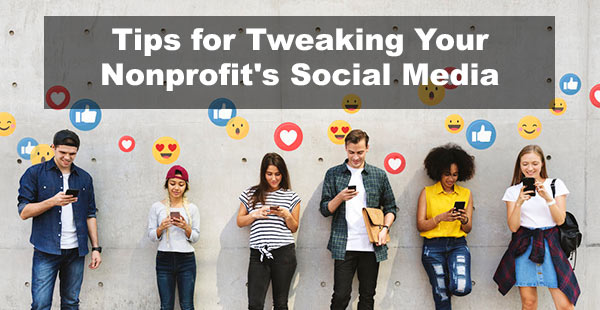Many nonprofit organizations have already signed up for Twitter, Google+ and Facebook accounts, and others are looking at Pinterest and Instagram. Social media is great – if the given platform is actually used and used to its full potential. Perhaps it’s time to scrutinize the platforms you’ve signed up with and make some changes to improve your nonprofit’s social media presence.
Guides for Nonprofits Using Social Media
The stories in the media are not exaggerations. Social media can be extremely beneficial for getting the word out and for developing a following of committed people. What is more, some of these platforms are going out of their way to help. Google+ offers a guide intended to be of service to nonprofit organizations wishing to sign up and use it for networking and information sharing.
Another guide is offered by Facebook. It shows 501(c) (3) charities how to make the best use out of largest social media presence on the Internet. The support is there but it has to be used.
Take advantage of these excellent guides and widen your knowledge about using social media for your nonprofit.
Why Many Nonprofits Still Aren’t Using Social Media
It takes more than just a sign-up to reap the benefits of social media activity. Time is one possible reason for not making better use of the opportunities.
A nonprofit organization also might not have the tools necessary to adequately evaluate the return on investment (ROI) that can be realized from using social media. Or it may be that they just don’t know how to use social media to their advantage.
Being Overextended May Be a Problem
Some of the nonprofit organizations may have signed up for social media just for the sake of signing up. That really isn’t much help in the long run. There is no reason for having an account simply for appearances. Nonprofit organizations should use social media but only those platforms that can offer the most benefit. Some of the ones that are recognized as being very beneficial for a nonprofit organization include the following:
- YouTube
Perhaps a better strategy for a nonprofit organization is to look critically at all the number of social media accounts it currently has. There may in fact be too many. It is quite possible that some of your social media accounts aren’t really important to your non-profit and should be discontinued. Focusing on a few might be a better use of time and derive better results.
Which Social Media Platforms Should You Use?
But, simply reducing an overextended social media presence doesn’t by itself guarantee noticeable benefits. For example, the demographics of the platform should match those the nonprofit organization is targeting. A nonprofit organization dealing with issues related to women may want to consider Pinterest because women are the largest demographic using this platform.
Once the field has been narrowed down to a few, the use has to be carefully focused. It is important to adapt the wording in your posts to your followers on each social media channel. That requires sensitivity to the audience of each channel. Read more about coordinating your marketing channels.
For example, a slang filled message posted on Reddit would have to be changed to a more business-oriented text to be posted on LinkedIn. That is not necessarily bad, either. Showing sensitivity to the audience on a given social media network helps build better donor and client rapport. It also helps staff develop the kind of Internet communication skills that help a nonprofit succeed.
Nonprofit organizations ought to take advantage of those social media platforms that have the best opportunity for success and discontinue membership on ones that don’t. In other words: quit those networks that aren’t used and don’t show any promise.
The ones that are kept should be worked carefully with the message structured for the given audience. That can turn a platform into a productive site for communicating the message and reaching out to potential donors.

